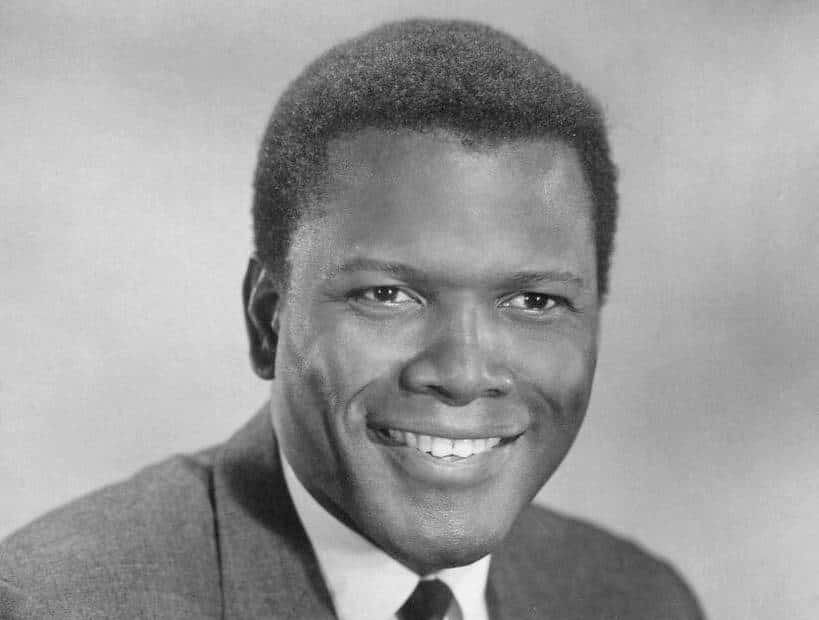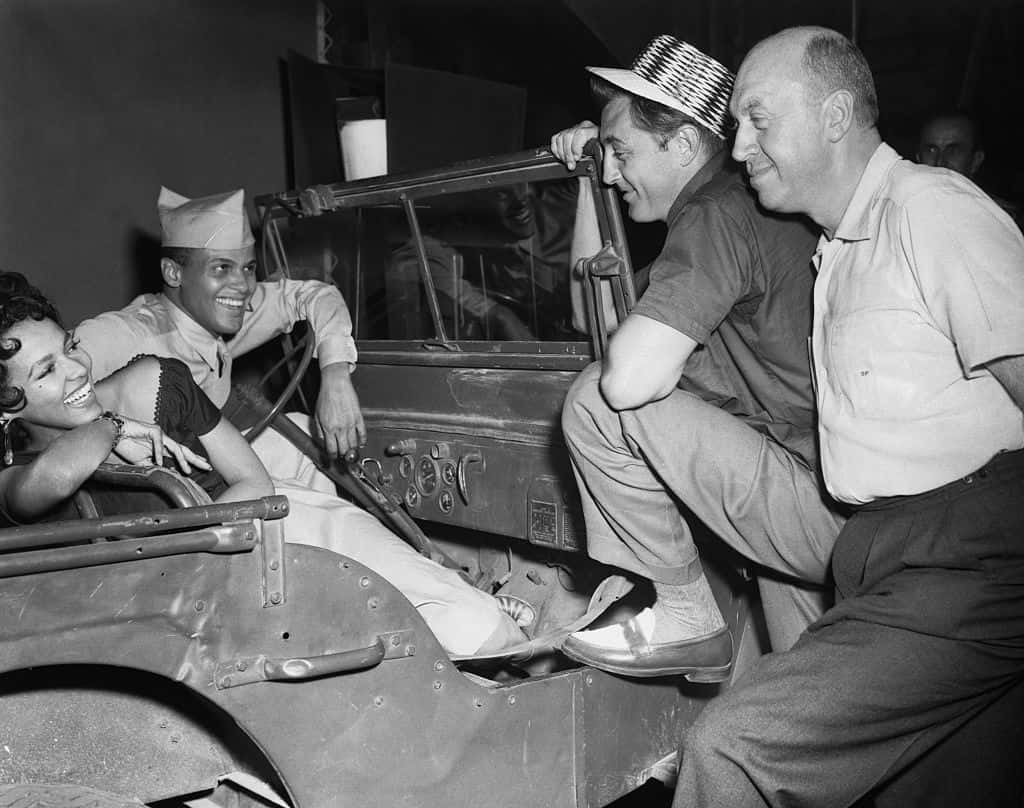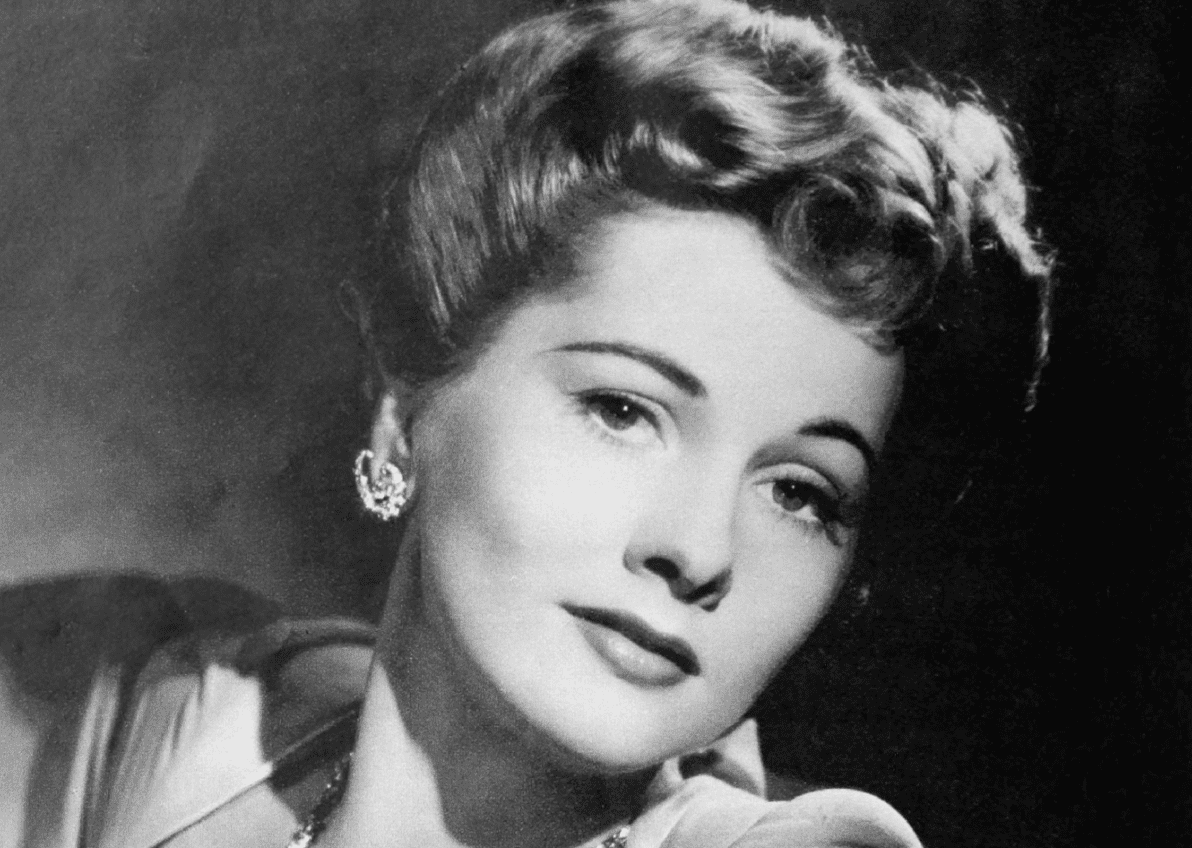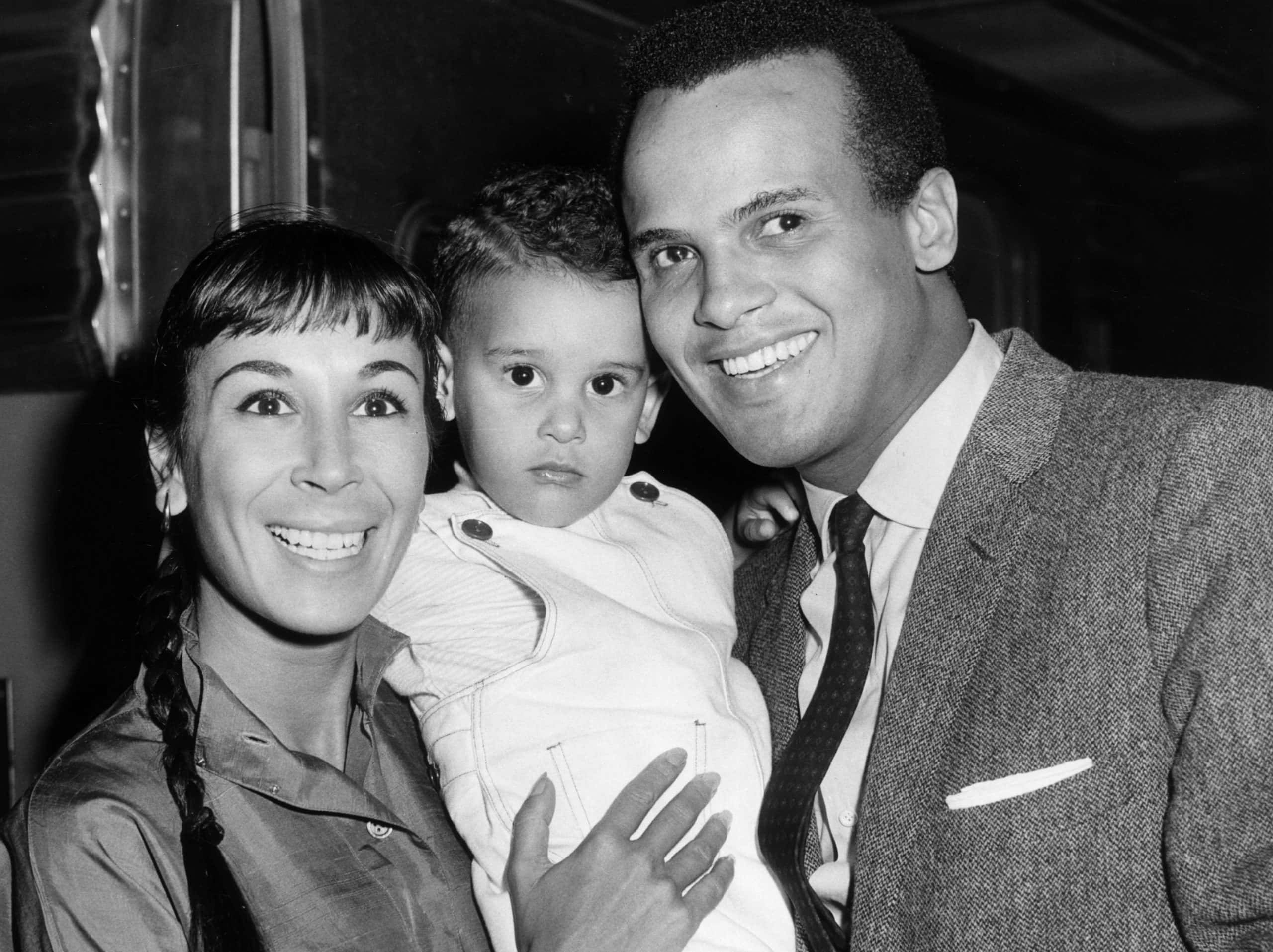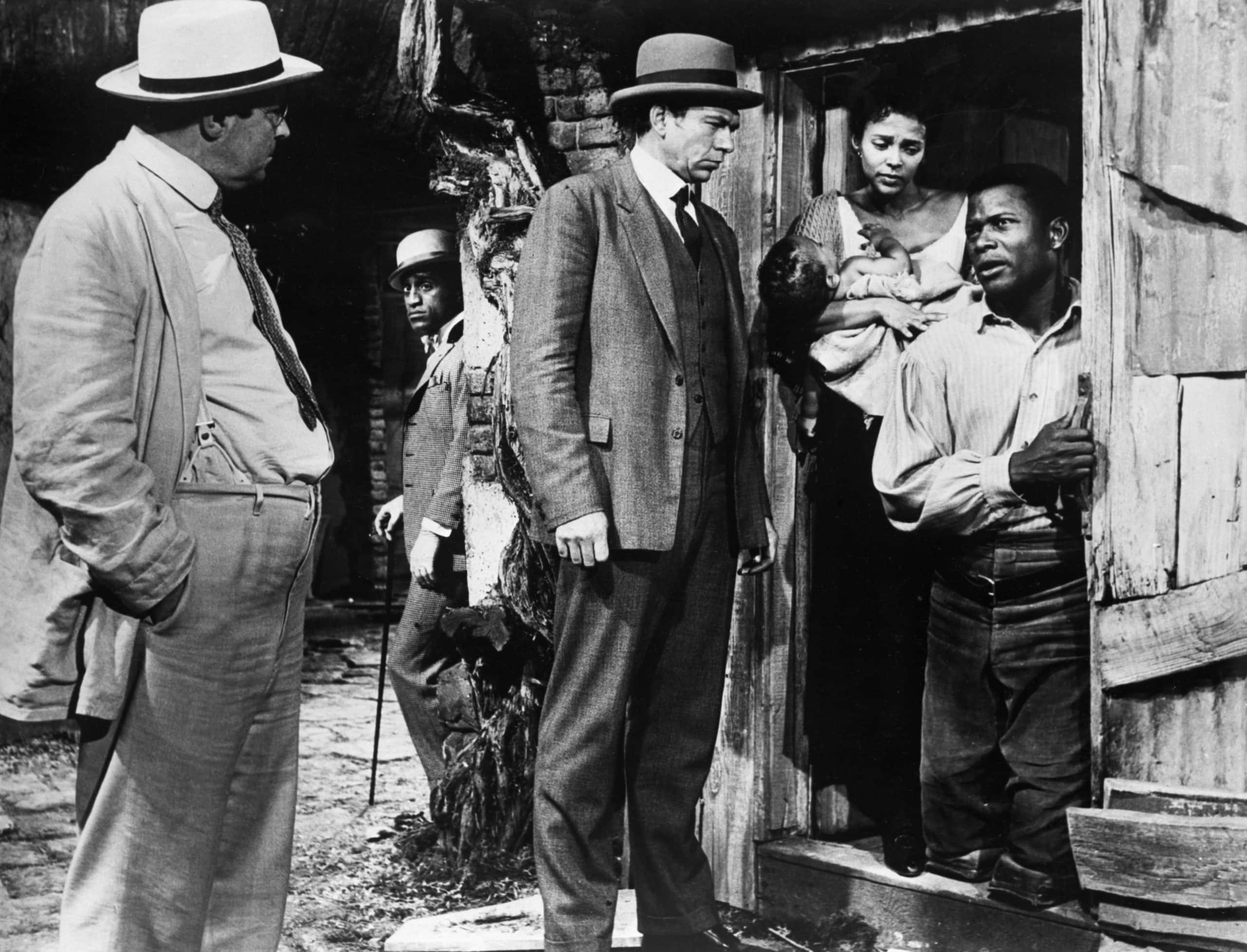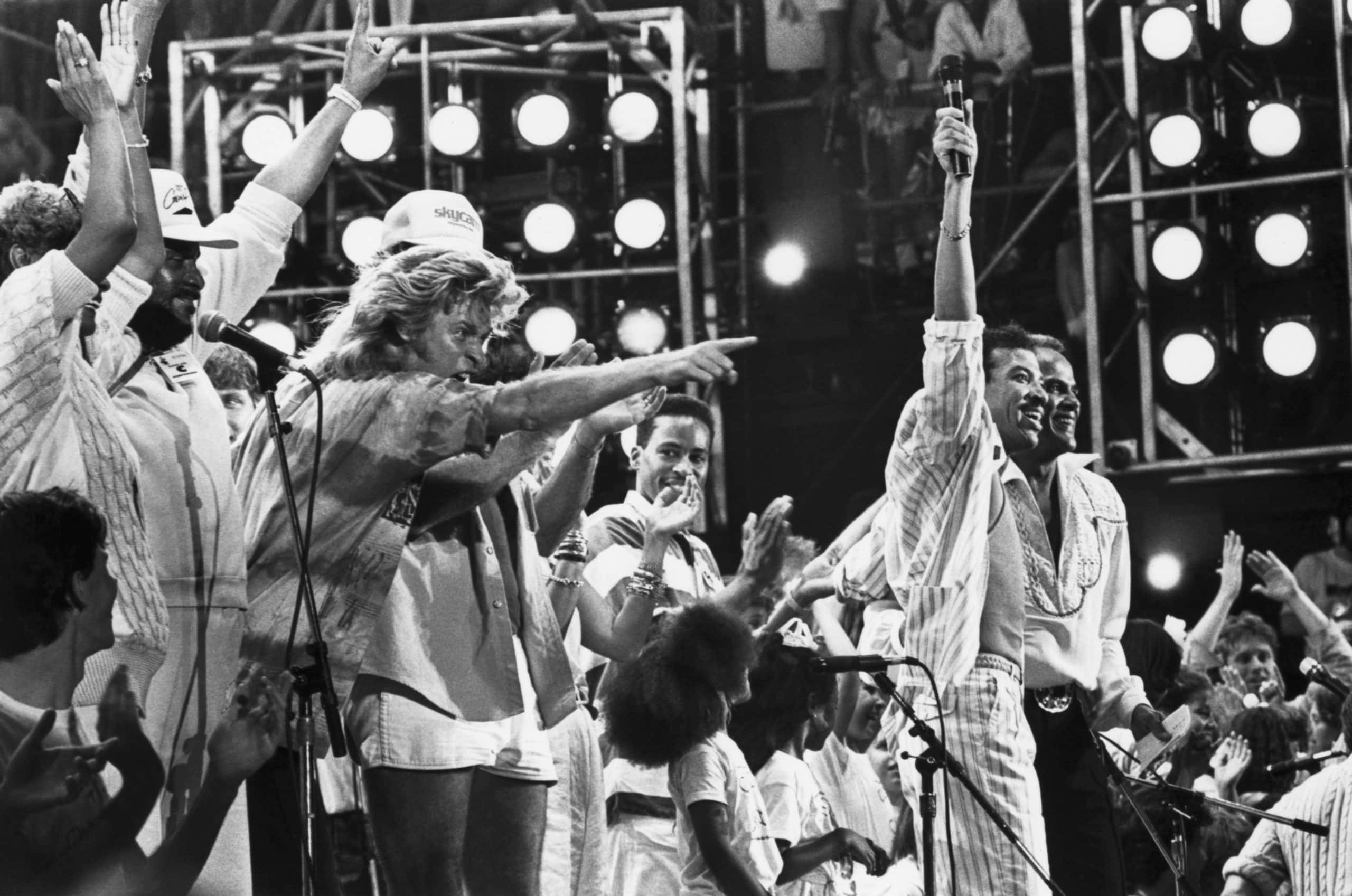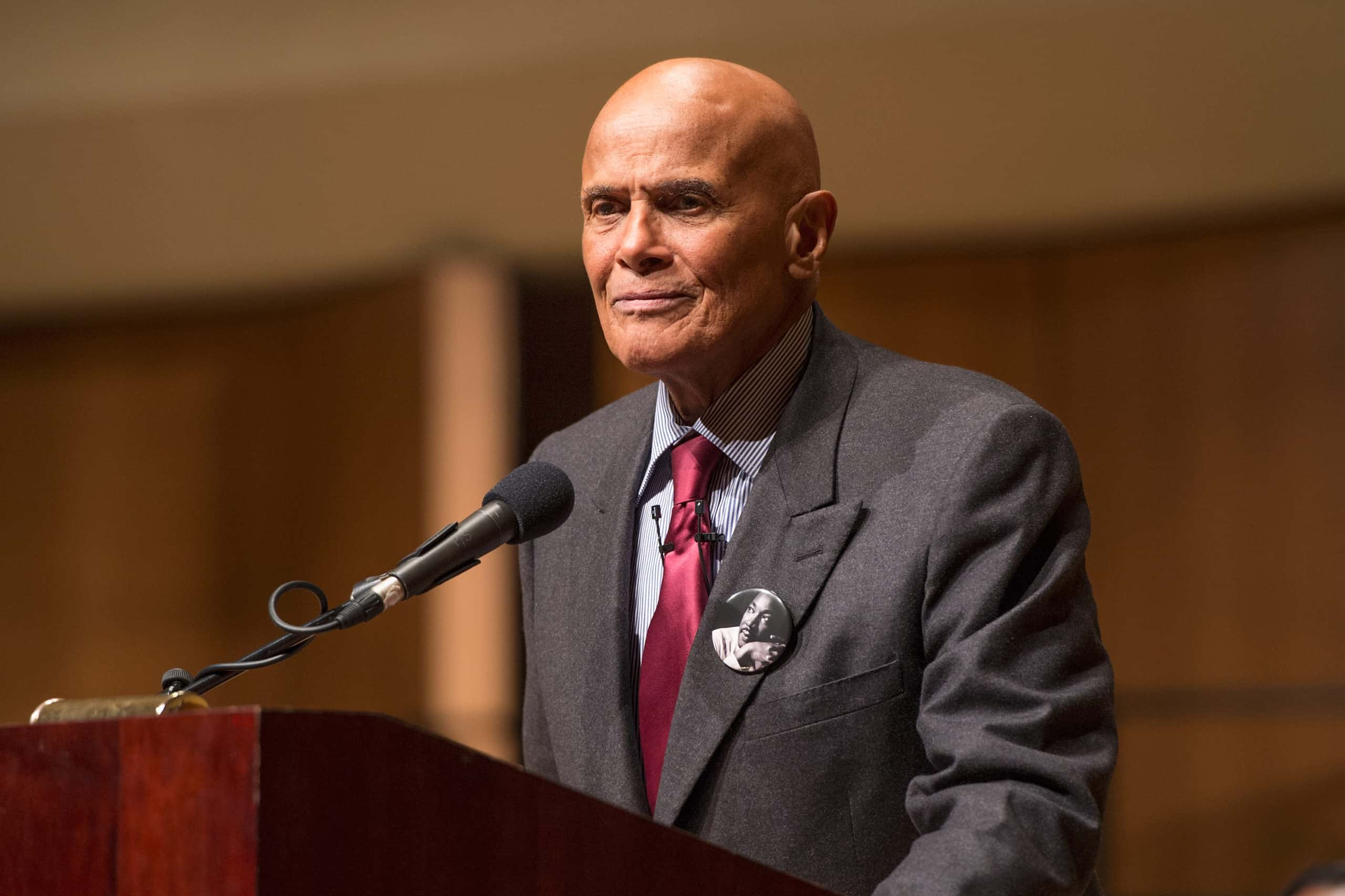In these days of social media and fast traveling news, celebrities often navigate the world carefully, thinking twice about what they say in public. But long before this was a concern, Harry Belafonte used his platform to make surprisingly divisive and consistently unapologetic statements. Maybe he was just born bold—or maybe his own life of adversity taught him to speak without fear.
1. His Parents Faced Hardships
Belafonte was born in Harlem, New York, in 1927. Like many immigrants, his Jamaican parents probably came to the United States in search of a better life, not expecting the hardships that the remaining prejudice in the US brought. In fact, his mother found the city so intense and scary that she made a heartbreaking decision.
2. His Mother Gave Him Up
Just a little over a year after his birth, Belafonte’s mother made a devastating choice. She took Harry to Jamaica and left him there with his grandmother. He stayed there for about eight years, learning and growing in a very different environment from the city he left behind. Belafonte’s parents must have thought this the best place for their child to grow up—but he still saw and experienced hardship that never left him.
3. His Family Had A Hard Life
Britain still owned Jamaica when Belafonte lived there, and he witnessed firsthand the effects of colonization on the Black locals. Most of his family worked on plantations, and he experienced the back-breaking work and poverty that characterized the lives of those who looked like him. Belafonte eventually left the challenges of that life behind him to return to his parents—but even more challenges waited for him on the mainland.
4. He Faced Terrible Troubles
Back in New York City, Belafonte attended George Washington High School. He spent a lot of time alone in his mostly Italian corner of Harlem, as his mother worked long hours to provide for him. As if the situation wasn’t bad enough, Belafonte hid a secret struggle behind closed doors. When he had trouble in school, it wasn’t because of a lack of willingness to learn, but because he battled dyslexia. Finally, still just a freshman, Belafonte decided to end his traditional education.
After all, he had much bigger plans.
5. He Dropped Out
Harry Belafonte left school to join the Navy, enlisting just in time to serve in World War II. Black men like himself in the Navy did mostly menial work. However, Belafonte found much more than work with the Navy, as he was among intellectual Black men who introduced him to the work of W.E.B. Dubois. On top of that, he found himself in the presence of someone who would push him to make a life-changing decision.
6. He Fell In Love With His Opposite
In 1944, Harry Belafonte first met Marguerite Byrd while stationed near Hampton Institute, which she attended. The two were very different. Belafonte grew up rough, and his experience with prejudice and colonialism showed. Byrd grew up in a community of Black elite, and somewhat ascribed to the potential of being “separate but equal.” But, as they say, opposites attract—and the pair moved quickly.
7. He Married Young
Even though Byrd called their relationship “one long argument over racial issues,” their disagreements didn’t keep them apart. They married in 1948, when Belafonte was just 21 years old. They had their first child in 1949—shortly before a kind gesture turned Belafonte toward a new goal.
8. A Small Act Inspired His Whole Career
Harry Belafonte worked as a janitor in a New York City building to make ends meet. After one of his jobs, a tenant gave him two tickets to a local theater as a tip. This performance absolutely inspired Belafonte—so much so that he volunteered as a stage manager at the theater. He caught the acting bug quickly, but he’d have to be extra clever in his pursuit of such an elusive dream.
9. He Played Tricks To Get Ahead
While working as a stagehand, Belafonte met Sidney Poitier, the man who would ultimately become the first African American to win an Academy Award. The two became fast friends in their pursuit of acting careers. Both yearned for success—and they came up with an ingenious way to perfect their craft. They’d often pool together their small funds to buy one ticket to local plays, then switch places between acts, so each could watch a portion.
Belafonte and Poitier both saw success over time, but their early days together weren’t always easy.

History's most fascinating stories and darkest secrets, delivered to your inbox daily.
10. His Best Friend Took His Spot
In 1958, Belafonte landed a starring role in a play called Days of Our Youth. Poitier played his understudy and went on in Belafonte’s place one night when he couldn’t find someone to take care of his other job. Belafonte had no idea he was making a grave mistake. It just so happens that recruiters attended the play that night, and cast Pointier in his first film, No Way Out.
Belafonte likely found the situation incredibly unlucky, and realized he’d have to work harder to make a name for himself in the world of acting.
11. He Never Meant To Do It
When Belafonte began singing in nightclubs around New York City, he was only doing it to make money to pay for acting classes. He definitely covered his acting classes, learning alongside people like Marlon Brando. But his singing voice paired with his good looks and easy charisma turned out to be an impressive combination filled with potential—one that would soon pay off big time.
12. He Got A Big Break
The Roost Label signed a fairly young Belafonte in 1949. He sang mostly the pop music of the time in those earlier years. He experienced some success with this first label, but his musical interests soon changed, turning to folk music. It was this new love for folk music, along with the way he incorporated the hardships and experiences of his Caribbean upbringing, that took Belafonte’s music career to places he’d never even imagined he could go.
13. He Was An Instant Star
By 1953, Harry Belafonte signed with a new label and released his first album, Calypso. The album featured some of his most famous singles ever, including “Day-O,” often known as the “Banana Boat Song.” It’s hard to overestimate what a blockbuster it was. It became the first album to sell one million copies in a year, but even more than that, it brought a new sound to listeners around the world.
His Caribbean folk style had originated in Trinidad and Tobago—a fact that made one of Belafonte’s new titles surprisingly uncomfortable.
14. He Didn’t Feel Like He Deserved His Title
Many critics called Belafonte the “King of Calypso” for his album’s wide-reaching success. However, Belafonte didn’t boldly claim the title. Back in Trinidad, calypsonians routinely competed for the actual title of calypso monarch, something Belafonte never did. Still, Belafonte’s Caribbean roots held strong, and his musical success took him to new places—and often, to places that weren’t particularly welcoming.
15. His Neighbors Hated Him
Now equipped with money and a taste for the luxurious things he could finally afford, Belafonte moved his family to a new, white neighborhood in Elmhurst, Queens. It should’ve been a dream come true—but instead, he faced a nightmare. His neighbors felt less than pleased with the presence of a Black family in their midst, and many moved out.
However, with the problems that Belafonte experienced on the road with his music, his neighbors’ opinions were likely the least of his worries.
16. His Venues Were Cruel To Him
Harry Belafonte toured the country performing his music, now in demand by both white and Black audiences. The success, however, turned out not to be all he had expected. He often couldn’t even stay at the posh hotels he sang at, who allowed him to perform but didn’t provide lodging for colored people. It must have been both embarrassing and distressing—but Belafonte responded by using his platform in powerful and often provocative ways.
17. He Refused To Perform
Belafonte experienced great success, but he still had to navigate an America rife with injustice and discrimination. He decided to use his art and access to make statements about his political and social ideals. In that very spirit, he absolutely refused to perform in the southern United States from 1954 to 1961 due to the segregation there.
Belafonte found not only the power in his refusal—but also the power in his newfound status.
18. He Funded A Famous Activist
Perhaps fate destined Belafonte and activist Martin Luther King Jr. to meet during this era when both men’s voices had the potential to move civil rights in the US forward. Destiny or not, the two men became good friends. Belafonte helped King with money and even bailed him out of the Birmingham City Jail in 1963. Belafonte never seemed to fear allying himself with the powerful activist—but sadly, it would come back to bite him.
19. They Blacklisted Him
Belafonte was never afraid to speak up—but unfortunately, that meant he faced some devastating consequences. During the McCarthy era, some politicians blacklisted Belafonte for his activism. Many Black artists came under suspicion, as some thought these charismatic Black leaders dangerous and called them out as being communists.
While the accusations proved repeatedly false, Belafonte himself showed no signs of pulling back on his activism—something that trickled into his career choices. He took a big step into the film world, but it was a move that came with a whole new set of trials.
20. The Film World Snubbed His Voice
Belafonte landed his first film role—Bright Road—in 1953. But his second film, Carmen Jones, really made a name for him in the film world. He starred alongside Dorothy Dandridge, but, in a move that might have surprised Belafonte, producers determined that his own singing voice wouldn’t match the role. Production dubbed his voice with a professional opera singer instead.
The film didn’t gross huge profits, but many critics still consider it a success. Belafonte continued to work in film, often in roles that attracted hateful attention.
21. He Played A Controversial Lover
In 1957, Belafonte starred in Island in the Sun, a movie that carefully explored multiple interracial relationships. By today’s standards, nothing in the film was explicit. But even the hints at a relationship between Belafonte’s Black character and his white woman love interest, played by Joan Fontaine, caused a stir. In fact, the film angered some so much that they took shocking action.
22. They Targeted His Costar
Belafonte lived through the prejudice and hate of the civil rights era, and probably expected the backlash from his role with Joan Fontaine. Fontaine, however, was in for a surprise of her own. Disgruntled white audiences targeted her, sending threats and poisoned mail. Interestingly enough, the risks didn’t stop another white co-star from taking things with Belafonte much further than anything that actually made the movie’s final cut.
23. He Had A Salacious Affair
During the filming, a very married Belafonte allegedly had an affair with another white woman in the cast—Joan Collins. Collins herself wrote that she found the incredibly handsome Belafonte hard to resist. While the romance fizzled out quickly, it likely played a role in the impending and dramatic end of Belafonte’s first marriage.
24. His Wife Found Revealing Letters
Things between Belafonte and his first wife had been rocky for a while, but the situation allegedly reached its peak when she found he was keeping love letters from another woman. Byrd, then pregnant with their second child, decided to end the relationship. The two divorced in 1957, and Belafonte was free to move on with the writer of the aforementioned love letters…and it wasn’t Joan Collins.
25. He Fell In Love With A Surprising Woman
Julie Robinson—the only white dancer in her company—had met Belafonte while they worked on Carmen Jones back in 1953. There must have been a spark between the two, because the love letters his first wife found had all been penned by her and kept carefully by Belafonte. But it was more than just a torrid affair. The two married secretly in 1957.
This was scandalous enough, but the biggest outcry came from somewhere Belafonte might not have expected.
26. People Criticized His Interracial Marriage
Belafonte’s new marriage made headlines, with some news sources declaring Belafonte’s choice to be with a white woman some sort of status symbol. This rubbed many Black people the wrong way, with even famed performer Eartha Kitt saying his choice was “something that no [Black] performer can afford.” Belafonte, however, seemed undeterred by his controversial love life choices.
He proved to be no stranger to further controversy in his film choices, either.
27. He Hated Stereotypes
Belafonte staunchly refused the leading role of Porgy in the film adaptation of Porgy and Bess in 1959. Some artists, like musician Duke Ellington, praised the story’s artistry. But Belafonte thought the story promoted dangerous, irrelevant stereotypes about the Black community. Belafonte turned down multiple roles, and often critiqued the Black men who took them up—including a supposed close friend.
28. He Refused An Oscar-Winning Role
Belafonte did plenty of film work, but he also rejected many roles in the name of what he believed. One particular role—the lead in Lilies of the Field in 1963—went to his friend, Sidney Poitier, only after he turned it down. Poitier won an Academy Award for the role, but Belafonte hated the role and the way it required its only Black character to be completely “noble, selfless, saintly.”
Belafonte used his artistic refusals to make a statement about his political opinions. Still, he didn’t shy away from making these implicit opinions very overt when he had the chance.
29. He Backed A Winner
In 1960, Belafonte made his support for the Democratic presidential candidate John F. Kennedy public knowledge. He starred in a campaign commercial for the liberal politician. In a trend that continued to reappear in his life, Belafonte found ways to intertwine his politics with his art. And, when Kennedy won the presidency—in no small part thanks to Belafonte’s campaigning—he repaid the singer with a lavish gift.
30. He Sang At An Inauguration
With the effort for civil rights in full swing, more artists began to cross over to both white and Black audiences. In a performance that reflected the changing face of America, Belafonte sang for the inaugural gala of President John F. Kennedy in 1961. Belafonte’s singing career created more success for him than he ever expected. Unfortunately, all good things do come to an end.
31. He Earned Famous Rivals
Belafonte’s music career began to wane in the 1960s. He experienced a bit of success with his last hit single, “A Strange Song,” but new musical acts like The Beatles eventually pushed Belafonte down the charts. Belafonte eventually moved on from music—but not without giving one last final “screw you” through his music.
32. He Took On One Of The Biggest Topics Of His Day
In 1965, Belafonte released one of his final albums, An Evening with Belafonte/Makeba. The album directly targeted the South African apartheid, a social system that kept races separate and treated darker people unjustly. The album didn’t receive as much success as others, but it served a deeper purpose than just earning money.
After all, Belafonte had more than enough money at this point. And he sure found unusual ways to invest it.
33. He Had A Secret Getaway
Belafonte enjoyed traveling, especially throughout the Caribbean. One of his very favorite islands to visit was Bonaire. He loved it so much that he decided to build his own luxury private community there in 1966—a community that remains a lush paradise for its inhabitants today. Belafonte turned toward many business ventures, but still had a ways to go in making his mark on the entertainment industry. Then, in 1968, he made his most memorable foray yet.
34. He Broke TV Barriers
When Johnny Carson took a short break from hosting The Tonight Show in 1968, Belafonte took his place, becoming the first Black person to host late-night television. Belafonte invited both Black and white guests, including Martin Luther King Jr. and Senator Robert F. Kennedy. Belafonte’s presence on late-night TV gave him the opportunity to reach a diverse audience.
Nonetheless, he still had enemies—powerful ones.
35. He Caused A Public Uproar
In one particular instance in 1968, Belafonte landed a spot on an NBC special with Petula Clark, a white British singer. When Clark inadvertently touched Belafonte’s arm during their performance, the aftermath was chilling. The show’s sponsor requested they retape the entire segment to avoid the interracial touching. Clark, however, refused this retape, and the show went on as aired.
It turned out to be extremely successful. Sadly, Belafonte wouldn’t always be so lucky when he tried to buck the system.
36. A Network Censored Him
In a CBS special later in that same year, Belafonte chose to perform in a Mardi Gras number. The Smothers Brothers Comedy Hour Special was set to open with Belafonte’s rendition of “Don’t Stop the Carnival” against footage of riots from the 1968 Democratic Convention. CBS cut the number, replacing it with a Republican campaign ad instead.
Belafonte’s fearless pursuit of politics and art continued to push him forward, and ultimately toward a surprising—and controversial—friendship.
37. He Befriended A Dictator
When Fidel Castro—the communist leader who led the Cuban revolution and assumed control of the island for decades—invited Belafonte to a film festival in Cuba in 1974, he happily accepted. This initiated a long-time friendship between the two. It was a friendship that many of Belafonte’s fans found scandalous, considering Castro’s authoritarian and often violent governing choices.
Still, Belafonte saw Castro as a revolutionary, and publicly opposed the US Embargo on the island nation. And that wasn’t all he did for Cuba.
38. He Was A Hip Hop Ambassador
Belafonte visited Cuba many times throughout his life. Before one of his visits with Castro in 1999, he connected with the Cuban rap community. His endorsement of the music to the dictator provided an opening for hip hop to grow and integrate itself with Cuban culture in a way the local hip hop community gratefully credited him for. Provocative or not, Belafonte made a point of reaching out, and refusing to neglect even the most unlikely fans.
39. He Conquered Children’s Entertainment
In 1978, Belafonte hit TV screens with a famous group of kids’ characters—the Muppets—with a performance that became one of the show’s most memorable. He sang his then classic “Day-O,” but his rendition of “Turn the World Around” made a bigger impact as the Muppets danced along in tribal African masks. He must have realized his capacity for making a difference, as he found more ways to reach out to people in need.
 The Muppet Show, Disney–ABC Domestic Television
The Muppet Show, Disney–ABC Domestic Television
40. He Helped Organize A Famous Song
Belafonte continued to use his status to help others and engaged in multiple humanitarian efforts. In one of his most visible humanitarian activities, he played an important role in bringing together the celebrity-studded vocal performance of “We Are The World.” The Grammy-winning song raised funds for the less fortunate on the continent of Africa. But just as Belafonte was on top of the world, a deadly disease tried to slow him down.
41. He Became Incredibly Ill
Belafonte’s prostate cancer diagnosis in 1996 was shocking. He remembers worrying about how others would view him when they knew his diagnosis. Luckily, doctors caught his case early, and performed life-saving surgery. Belafonte became a strong advocate for prostate cancer awareness, taking advantage of every opportunity to educate others. Soon, though, the claws were coming out again.
42. He Insulted A President
Upon the Bush administration’s entrance into the Iraq war in 2002, Belafonte made multiple statements about the President that did a lot more than rustle a few feathers. He opposed the conflict and Bush’s handling of multiple other issues, calling the sitting President “the greatest terrorist in the world.” These comments were especially inflammatory during the atmosphere of that era.
On top of that, Bush wasn’t the only person to come under fire from Belafonte.
43. He Called Out A Black Politician
Belafonte also verbally denounced Colin Powell and his role in the Bush administration. He declared Powell “committed to come into the house of the master, as long as he would serve the master, according to the master’s purpose.” In other words, Belafonte called Powell the President’s yes man—a statement neither Powell nor many others in the Black community took lightly.
44. His Statements Divided The Black Community
Powell responded to Belafonte’s fiery comments with little words, simply calling the artist’s thoughts “unfortunate.” Condoleezza Rice, another Black politician, responded by declaring, “I don’t need Harry Belafonte to tell me what it means to be Black.” The opinions within the Black community likely wavered between the two, as many agreed with Belafonte, even as others took into account the strides Powell and Rice had made.
But they weren’t the only ones he was facing…
45. He's Made A Lot Of Enemies
With his outspoken political statements and controversial friends (ahem, Castro), Belafonte has long been a target for government surveillance...but few would agree that he deserved the brutal betrayal that two of his closest confidantes dealt him in the late 50s. Not only did his manager act as an informant, conveying information about Belafonte to the FBI—but so did his psychiatrist. Hmm, I think that violates a number of professional conduct standards...
They told officials that Belafonte was a "double agent" who was "controlled by Peking..."
46. He Doubled Down
Belafonte called Bush a terrorist again while giving a speech on Martin Luther King Jr. Day at Duke University. He felt that the Bush administration overall was held down by “arrogance wedded to ignorance.” When interviewers asked him why he made such comments when he knew he would be harshly criticized, Belafonte simply replied that “Dissent is central to Democracy.”
And throughout his history, just as often as his public comments brought him under fire, his private life also caused trouble.
47. He Met His Match
Belafonte’s affair with Joan Collins sent scandalous ripples through Hollywood—but sadly, it wasn’t the only time he stepped out of his marriage. In the early 50s, Belafonte’s press agent felt the counterintuitive need to fix him up with another one of her gorgeous clients, Dorothy Dandridge. Seriously, if your job is press agent, wouldn’t you try and avoid encouraging your client to cheat?
Either way, when the pair met, sparks flew.
48. They Were Too Alike
Even though Belafonte was technically still married to his first wife, Dandridge was a-ok with it. But soon enough, the cracks began to show…in a seriously hilarious way. Both Dandridge and Belafonte were very into psychoanalysis, and this shared passion soon turned every instance of bickering into a barrage of therapist’s lingo like “boundaries,” “dependence,” and “castration complex.”
They broke up, only to end up cast in Bright Road together. Dandridge wound up in a torrid relationship with the film’s director, while Belafonte, of course, went home to his wife.
49. His Marriage Fell Apart
Despite the damage that his outspoken nature often wrought in his professional life, Belafonte’s personal life seemed tranquil—but under the surface, trouble was brewing. In 2004, after 47 years of marriage and two children with Julie Robinson, Belafonte once again filed for divorce. The then-77-year-old’s decision was surprising, and not much detail exists on the reason for the divorce.
However, Belafonte did say that he felt “angry and trapped.” Still, the failure of his second marriage didn’t stop him from being on the lookout for his next romance.
50. He Married A Third Time
Four years after his second divorce, at the age of 81, Belafonte joined himself in matrimony with his third wife, Pamela Frank. He remains married to Frank, a photographer, today. As unpredictable as his love life seemed to be, Belafonte was unchanging in one area: his willingness to critique those in power. And he’s still making sure nobody forgets it.
Sources: 1, 2, 3, 4, 5, 6, 7, 8, 9, 10, 11, 12, 13, 14, 15, 16, 17, 18, 19, 20










